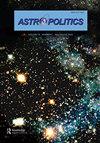The Myth of Tactical Anti-Satellite Weapons: Redefining and Effectively Controlling
Q3 Social Sciences
引用次数: 0
Abstract
ABSTRACT Significant recent scholarship has addressed the apparently accelerating proliferation of antisatellite (ASAT) weapons in the international system by proposing the development of new institutions or instruments for arms control in space. However, the historical record is not encouraging for this approach, as the last 40 years have seen repeated, failed attempts to do just that. How might it be possible to surmount this evident resistance to developing an arms-control regime for space? This article advances the argument that rather than attempting to create new mechanisms for controlling ASATs, the most profitable path forward may be to reframe kinetic space weapons as strategic weapons of mass destruction (WMDs). It presents a typological framework for the classification of WMDs, and situates kinetic ASATs within this rubric. It then discusses how reframing kinetic ASATs as WMDs could provide for the effective control of such weapons by rendering them subject to existing treaty and normative frameworks, thus avoiding the need for new agreements or institutions. Finally, it discusses some of the limitations and potential consequences of this approach.战术反卫星武器的神话:重新定义和有效控制
近年来,国际体系中反卫星武器(ASAT)的扩散明显加速,一些重要学术研究提出了发展新的太空军备控制机构或工具的建议。然而,这种方法的历史记录并不令人鼓舞,因为在过去的40年里,人们多次尝试这样做,但都失败了。如何才能克服这种对发展空间军备控制制度的明显阻力?本文提出的论点是,与其试图建立控制反卫星的新机制,最有利的前进道路可能是将动能空间武器重新定义为大规模杀伤性战略武器。它提出了一个大规模杀伤性武器分类的类型学框架,并将动能反卫星导弹置于此分类范围内。然后讨论了如何将动能反卫星导弹重新定义为大规模杀伤性武器,从而使其受制于现有条约和规范框架,从而避免需要新的协定或机构,从而有效控制此类武器。最后,讨论了这种方法的一些局限性和潜在后果。
本文章由计算机程序翻译,如有差异,请以英文原文为准。
求助全文
约1分钟内获得全文
求助全文
来源期刊

Astropolitics
Social Sciences-Political Science and International Relations
CiteScore
1.20
自引率
0.00%
发文量
2
期刊介绍:
Astropolitics: The International Journal of Space Politics and Policy is a peer-reviewed academic journal. The journal is dedicated to policy relevant and interdisciplinary analysis of civil, commercial, military, and intelligence space activities. Committed to the highest editorial standards, Astropolitics is the international journal of choice for the academic, policy-maker and professional in the space community.
 求助内容:
求助内容: 应助结果提醒方式:
应助结果提醒方式:


